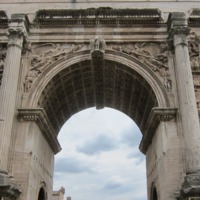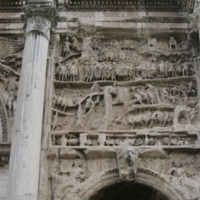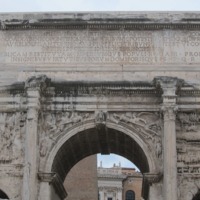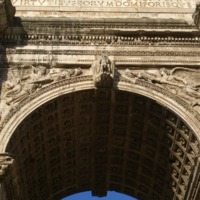Sculptures: Personifications
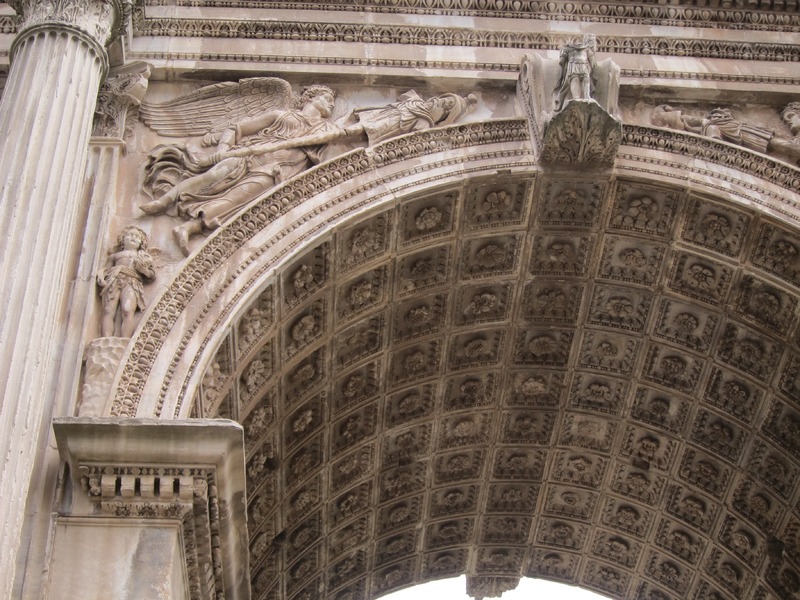
The Arch for Septimius Severus, detail of Summer, Victory, and Mars
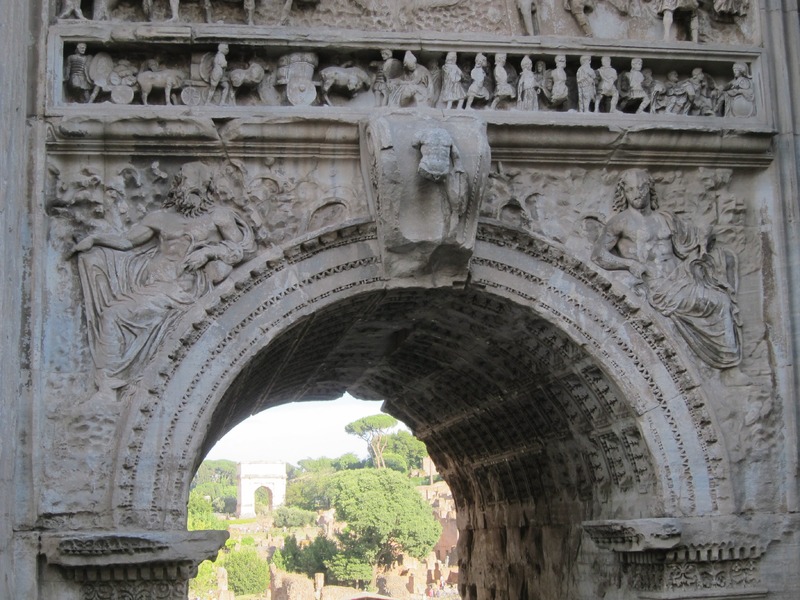
The Arch for Septimius Severus, detail of river gods in the spandrels
Prominent figural sculptures on the spandrels and keystones of both sides of the arch command viewers’ immediate attention. The Victories in the central spandrels of both sides of the triple bay arch, which are by far the largest figures, represent Septimius Severus’ successful campaigns1. These particular Victories are less naturalistic than the more sensually carved Victories on the Arch for Titus; these are fully clothed with unnaturally flowing drapery, carved in high contrast.
Below the Victories, small figures personifying the four seasons represent lasting Roman dominion2. A message of continuity was key in the context of the third century, when the stability of the empire was becoming increasingly uncertain3. In the keystone of the central arch of the Capitoline Hill side, a statue of Mars, flanked by the two Victories, indicates the absolutely central position of war.
Two river gods appear in the spandrels of the left-hand arch of the well-preserved Capitoline Hill side4. These resemble the river gods, each personifying a river representative of the campaign, that appear at the beginnings of the narrative friezes on the Column for Trajan and the Column for Marcus Aurelius. These river personifications appear in front of what could be rocky terrain, perhaps standing in for a mountain range from Septimius Severus’ Parthian campaign.
The nude figure on the keystone above the river gods is difficult to read, but the object it holds is a clue: it could be the pelt of the Nemean lion, making this a statue of Hercules5. The inclusion of Hercules on the arch is in line with Septimius Severus’ penchant for clear projections of strength.
___________
1. Richard Brilliant, The Arch of Septimius Severus in the Roman Forum, Memoirs of the American Academy in Rome Vol. 29 (Rome: American Academy in Rome, 1967), 29.
2. Brilliant, 30.
3. Maggie Popkin, The Architecture of the Roman Triumph: Monuments, Memory, and Identity (Cambridge: Cambridge University Press, 2016), 136.
4. Brilliant, 18.
5. Brilliant, 123.
